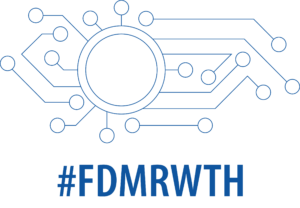
Quelle: Pixabay
In der Forschung führt inzwischen kein Weg mehr am Forschungsdatenmanagement (FDM) vorbei. Doch warum ist das so? Und welche Vorteile bietet FDM?
Warum ist FDM wichtig?
FDM ist ein wichtiger Bestandteil des Forschungsprozesses, der sich auf den Umgang mit Forschungsdaten bezieht. Es umfasst die Planung und Umsetzung der Aufbereitung, Speicherung, Archivierung sowie Veröffentlichung der Daten.
In der Wissenschaft sind Forschungsdaten die eine wichtige Ressource. Der verantwortungsvolle Umgang mit dieser Ressource ist die Voraussetzung für den Erhalt und die Verbreitung wissenschaftlicher Erkenntnis und damit eine wesentliche Grundlage für den wissenschaftlichen Fortschritt.
FDM bringt aber nicht nur einen Mehrwert für Wissenschaft und Gesellschaft, sondern sowohl für die Forschenden als auch die Nachnutzenden und fördert somit den Wissenschaftsbetrieb als Ganzes.
Qualität und Effizienz
Wenn Forschende ihre Daten mit Hilfe gemeinsamer, standardisierter Regeln benennen, beschreiben und ordnen, behalten sie nicht nur über die eigenen Daten einen Überblick, sondern auch über die kollaborativ zu bearbeitenden Forschungsdaten.
Mit der richtigen Dokumentation und Aufbereitung der Daten werden zudem doppelte Arbeiten (z. B. erneute aufwendige Einarbeitung in die Daten aufgrund personeller Fluktuation) und Erhebungen vermieden. So kann nicht nur Zeit gespart, sondern auch Ressourcenschonend gearbeitet werden.
FDM verbessert damit die Qualität der Daten und sichert ihre Vollständigkeit.
Sicherheit und Schutz
Das Risiko eines Datenverlusts wird durch FDM-Maßnahmen wie Datendokumentation, systematische und regelmäßige (bestenfalls sogar automatisierte) Datensicherung, zukunftssichere Dateiformate und eine geeignete Langzeitarchivierung minimiert. Die Forschungsdatenplattform Coscine unterstützt die Forschenden dabei.
Sichtbarkeit und Nachnutzung
Mittels der Veröffentlichung und Verfügbarkeit der Forschungsdaten kann sich die Sichtbarkeit der Projekte erhöhen und damit auch die Zitierhäufigkeit und eigene Reputation. Durch die verbesserte Sichtbarkeit bietet sich die Chance für Forschende auf Kooperationen.
Zugleich wird aber auch die allgemeine Transparenz der Forschung gewährleistet, da dokumentierte und veröffentlichte Forschungsdaten die Reproduzierbarkeit und in der Folge auch die Nachprüfbarkeit der Ergebnisse ermöglichen. Damit unterstreicht die Publikation die Verlässlichkeit der Forschung.
Doch damit nicht genug: Nachnutzbarer Dateiformate und umfassende Beschreibungen (Metadaten) erleichtern langfristig die Wieder- und Weiterverwendung der Forschungsdaten. So wird der Grundstein für aufbauende Arbeiten gelegt und zu einer insgesamt effizienteren Wissenschaft beigetragen. Denn die veröffentlichten Forschungsdaten können unter Betrachtung weiterer Fragestellungen die Grundlage neuer Erkenntnisse sein.
Integrität und Förderung
Mit vorausschauendem FDM werden die Anforderungen der guten wissenschaftlichen Praxis erfüllt. Diese richten sich nach den Leitlinien der DFG, dessen Ziel die Verankerung einer Kultur der wissenschaftlichen Integrität ist. Denn diese bildet die Grundlage einer vertrauenswürdigen Wissenschaft.
Zudem erhöhen sich mit einem gut durchdachten FDM die Chancen auf Förderung, da inzwischen von vielen Förderungsorganisationen, Drittmittelgebern und Verlagen bereits im Rahmen der Antragsstellung ein Konzept für das Datenmanagement verlangt wird. Damit soll sichergestellt werden, dass Wissenschaft und Gesellschaft von den eingesetzten Projektmitteln bestmöglich profitieren und gewonnene Daten und Ergebnisse auch lange nach Projektende der breiten Masse zugänglich sind.
Mehr erfahren
Wenn Sie Fragen zum Forschungsdatenmanagement haben, wenden Sie sich einfach an das IT-ServiceDesk. Das FDM-Team freut sich auf Ihre Nachricht.
_____
Verantwortlich für die Inhalte dieses Beitrags ist Sophia Nosthoff.





Schreibe einen Kommentar
Du musst angemeldet sein, um einen Kommentar abzugeben.